iOS App Testing Guide to Ensure Functional Apps
In a crowded App Store with over 1.96 million apps available, users are highly selective about which apps they download and keep. The choice often comes down to the quality of the user experience, app performance, and reliability. A study by Business of Apps shows that only 25% of users remain active on Day 1 after downloading an app, and this retention rate plummets to around 6% by Day 30.
Furthermore, about 77% of daily active users (DAUs) are lost within just the first three days post-installation. Over a longer period, the churn rate is even more telling, with an average of 68% of users abandoning the app within three months.
These numbers highlight the importance of having a seamless and bug-free user experience, which can be achieved through iOS app testing.
We can help you drive iOS App Testing as a key initiative aligned to your business goals
What is iOS App Testing?
iOS app testing is essential to ensure applications deliver the expected user experience before launch, aiming to prevent potential issues. Apple's iOS is a leading platform for smartphones, tablets, and other mobile devices, with a global market share of approximately 30% and over 50% in North America.
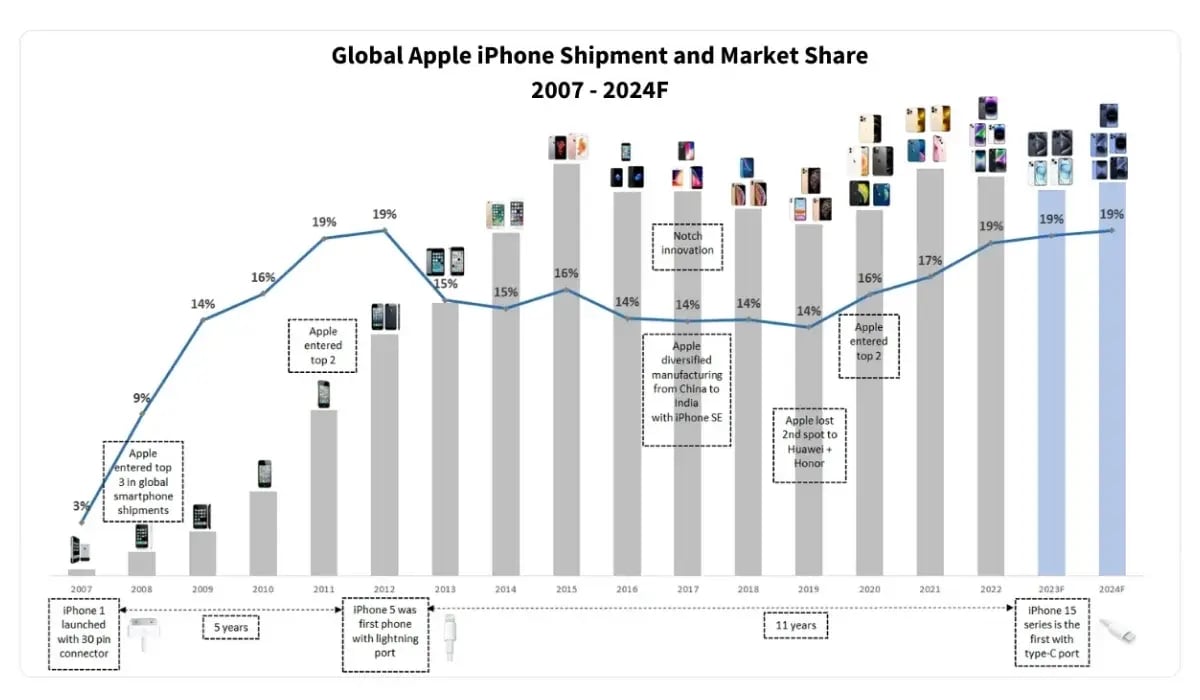
Testing iOS apps can be tricky because the system is closed, making it hard to access the code. Plus, Apple frequently updates iOS, so developers must test their apps regularly to ensure they work well with each new version.
Testing Native iOS apps
Native apps, typically developed in Swift or Objective-C using the official iOS SDK, use Apple's native APIs and UI components. While native iOS apps generally exhibit consistent behavior, compatibility issues can arise due to variations in programming language versions or operating system types. iOS native app testing helps identify and address these issues before app deployment.
Testing Web Apps on iOS
Web apps, which serve as mobile counterparts to websites, can utilize various frameworks, resulting in diverse behavior across different browsers. Since iOS users have different preferences for browsers, testing web apps ensures that they function optimally across popular options like Safari, Chrome, Firefox, and others. This involves checking for compatibility issues and performance optimizations and ensuring consistent functionality across different browser versions.
Furthermore, web apps may interact differently with device features such as touch gestures, screen sizes, and orientations. Testing on iOS devices helps identify and address any discrepancies in user interaction, ensuring that the web app behaves as expected regardless of the device used.
Testing Hybrid apps on iOS
Hybrid apps blend the features of native iOS apps with web-based applications, often incorporating a native UI component known as a "webview." This integration allows developers to leverage web technologies for app logic while accessing native APIs like camera or media library functionalities. Given the intricate nature of hybrid apps, thorough testing is crucial to identify compatibility and performance issues before releasing them to users.
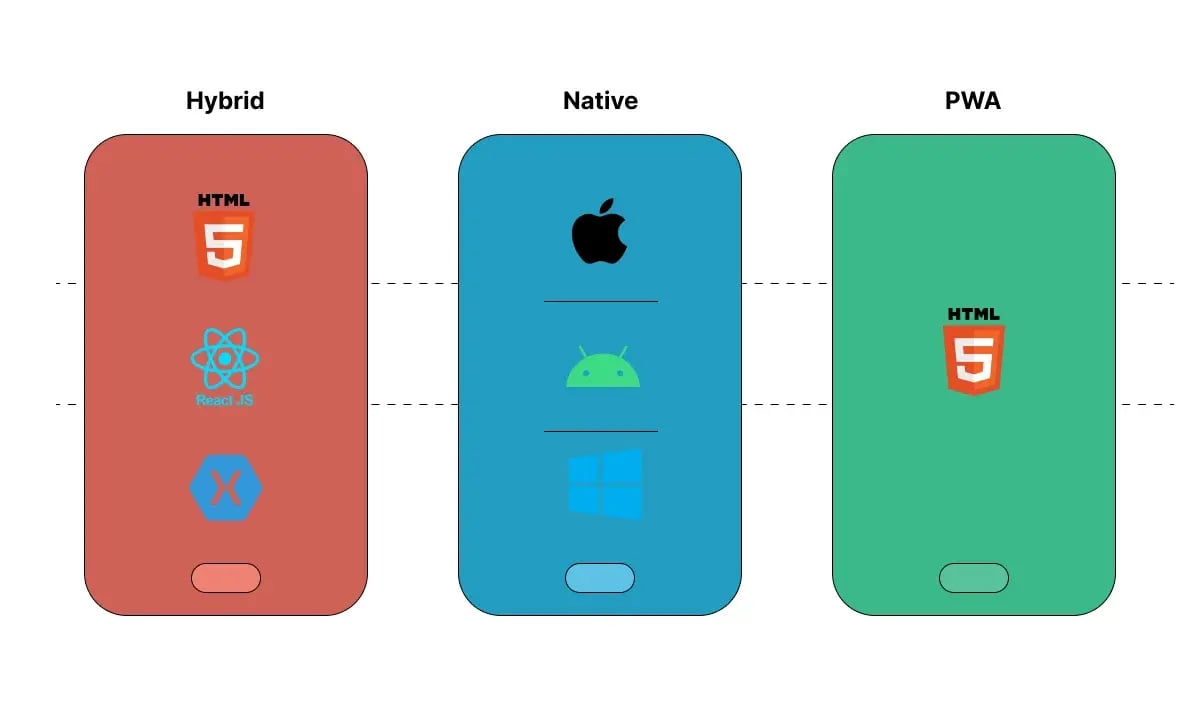
Types of iOS app testing
Types of iOS application testing involve different methods to make sure iOS apps work well on various devices and situations. These methods include:
- Checking if app features work right (functional testing),
- Assessing user experience (usability testing),
- Testing how fast the app runs (performance testing),
- Making sure it works on different devices and iOS versions (compatibility testing),
- Checking for security issues (security testing), and
- Ensuring updates don't break the app (regression testing).
- Each type is important for delivering good iOS apps to users.
Automated Testing
Unit Testing
Unit testing focuses on isolating individual units of code and creating specific test cases for them. This ensures that each unit performs as expected during different stages of development. Key benefits include:
- Early detection of issues within isolated code units.
- Clearer code understanding among team members.
- Streamlined testing processes accelerate overall development.
- Simplified updates and refactoring.
- Early error detection reduces long-term costs.
UI Testing
UI testing involves simulating user interactions to verify that the app's user interface functions as intended. Using Apple's XCTest framework within Xcode, developers can:
- Simulate user actions like taps, swipes, and text inputs.
- Validate UI elements and user workflows.
- Detect layout problems and navigation flaws.
- Guarantee a seamless and intuitive interface.
Integration Testing
Integration testing ensures that different modules and components of an app work together seamlessly. It involves:
- Verifying communication between integrated units.
- Identifying problems at integration points.
- Confirming that the app functions as a unified system.
Performance Testing
Performance testing evaluates the app's responsiveness, stability, and resource usage under various conditions. Developers can use tools like Instruments in Xcode to:
- Test the app's performance under different loads.
- Measure response times, CPU usage, and memory consumption.
- Identify and fix performance bottlenecks.
Continuous Integration (CI) Testing
CI testing automatically integrates code changes from multiple developers into a shared repository. This process helps to:
- Detect and fix bugs early in the development cycle.
- Maintain a stable codebase with frequent updates.
- Quickly identify and resolve issues with automated reports.
Manual Testing
Exploratory Testing
Exploratory testing is an unscripted testing approach where testers actively explore the app to discover unexpected defects. It helps to:
- Uncover bugs that predefined test cases might miss.
- Understand the app from a user's perspective.
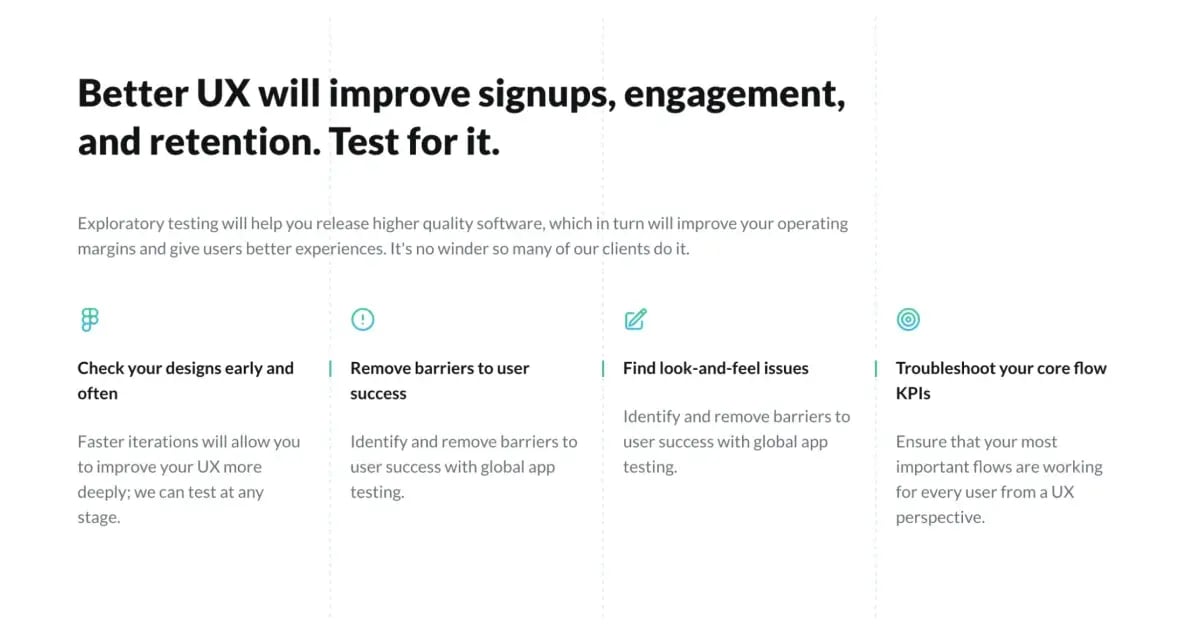
Usability Testing
Usability testing evaluates the app's ease of use and user experience. This involves:
- Ensuring intuitive and accessible UI elements.
- Gathering insights on user satisfaction and potential improvements.
Compatibility Testing
Compatibility testing ensures the app performs correctly across various devices, iOS versions, and configurations. It focuses on:
- Device compatibility across different iPhone and iPad models.
- OS compatibility to ensure functionality on various iOS versions.
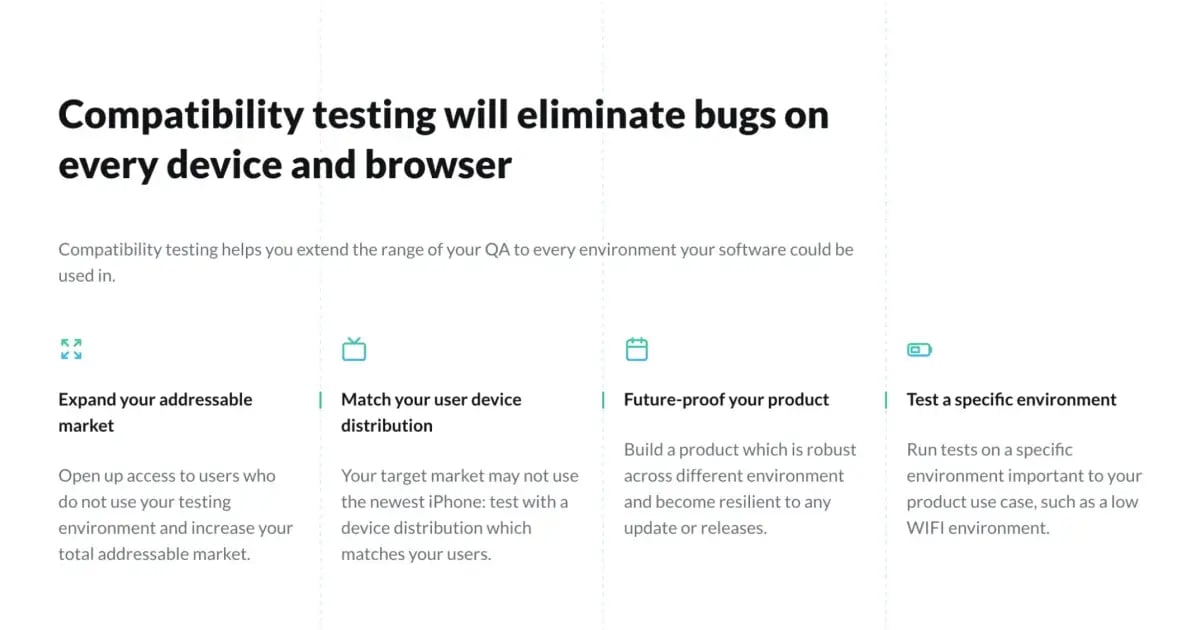
Beta Testing
Beta testing involves releasing a pre-release app version to a limited group of users to gather real-world feedback. It aims to:
- Identify issues and areas for improvement.
- Ensure the app meets user expectations in real-world scenarios.
Localization and Internationalization Testing
This testing ensures the app provides a consistent experience for users across different regions and languages. It involves:
- Verifying correct translations and cultural appropriateness.
- Test date formats, currencies, and other localized elements.
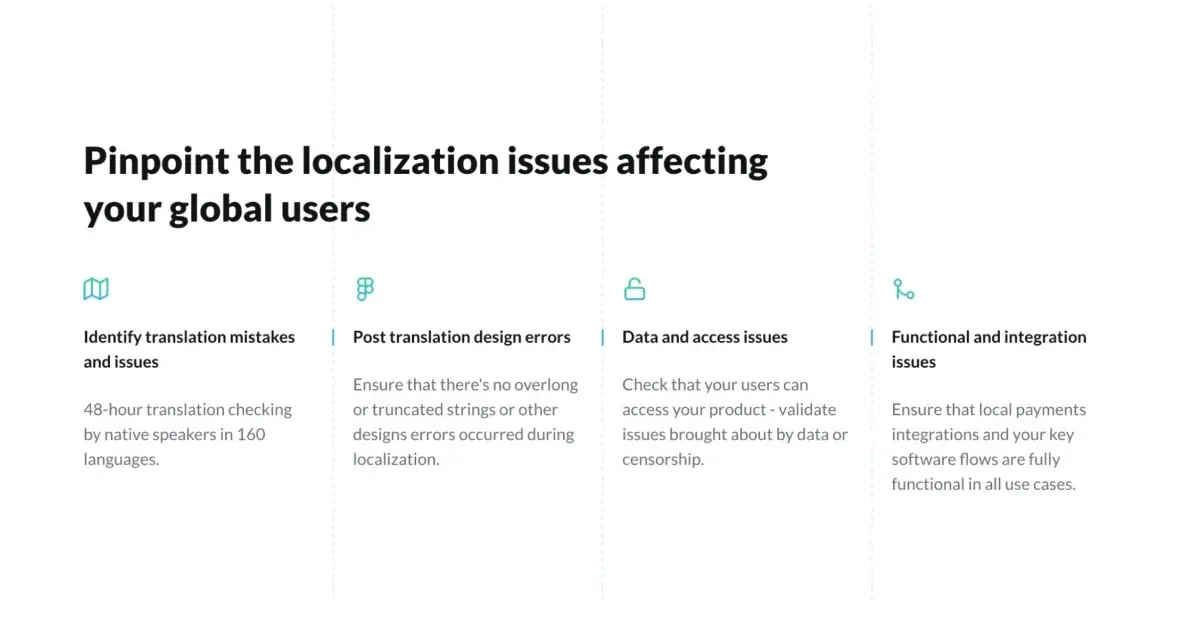
Accessibility Testing
Accessibility testing ensures that the app is easily usable by people with disabilities, promoting inclusivity. It focuses on:
- Assistive technologies and testing compatibility with screen readers and other aids.
- Inclusive design that ensures that all users can navigate and use the app effectively.

Manual Testing vs. Automated Testing on iOS
Manual testing for iOS apps offers several benefits. Firstly, it provides a human perspective, allowing testers to explore the app naturally and intuitively, which often reveals usability issues and unexpected defects early on. Additionally, manual testing offers flexibility, enabling testers to adapt their approach based on real-time observations. This method also allows for early-stage testing, providing valuable feedback before automated testing begins.
While manual testing may require a significant time investment and there's potential for human errors, it remains indispensable for ensuring thorough app quality. Moreover, manual testing can be tailored to specific user scenarios and edge cases, enhancing the overall user experience.
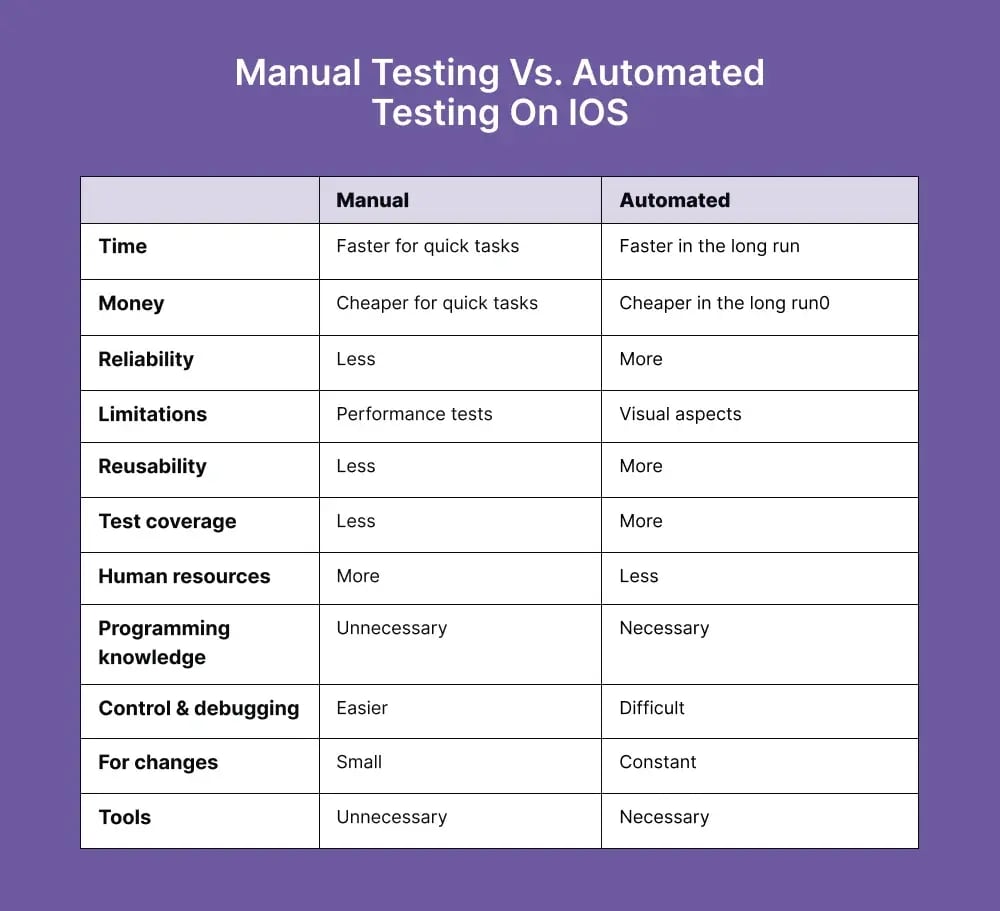
Automated testing enhances efficiency and scalability by executing numerous test cases quickly and reliably. It is ideal for repetitive tasks and regression testing, offering:
- Faster execution of tests.
- Ability to test multiple scenarios simultaneously.
- Reduced costs over time, particularly for large-scale testing.
- Consistent and repeatable results.
Best Practices in iOS App Testing
1. Define clear testing objectives
What exactly do you want to achieve through testing? Are you aiming for flawless performance, impeccable compatibility, or exceptional user experience? By setting specific goals, you can focus on the most critical aspects of our app.
2. Automate where possible
Automation is a developer's best friend when it comes to testing. Leveraging testing frameworks like Apple's XCTest and integrating continuous integration (CI) tools such as Jenkins or CircleCI streamlines the testing process, making it more efficient and consistent. By automating repetitive tasks and regression tests, you can catch issues early and minimize the risk of costly fixes down the line, allowing us to focus on more complex testing scenarios.
3. Use thorough manual testing
While automation is essential, it cannot replace the human touch regarding certain aspects of testing. Exploratory testing allows testers to actively explore the application without predefined test cases, uncovering hidden bugs that automated tests might miss. Usability testing ensures the application's interface is intuitive and user-friendly. In contrast, accessibility testing verifies its usability for people with disabilities.
These manual testing approaches provide invaluable insights into the user experience, helping us create applications that truly resonate with our audience.
4. Use real devices over emulators
Although emulators are commonly used, they are not ideal for testing certain aspects, such as user interactions, battery consumption, network availability, and performance under real usage conditions. Therefore, always prioritize testing on actual devices.
Pro tip
At Global App Testing, we offer extensive testing coverage with 90,000 testers utilizing 60,000 devices, ensuring comprehensive evaluation across various platforms and scenarios.
- Device variety: Test on low-end and average devices, including those with low RAM, poor cameras, and low battery mode, to assess performance under various conditions.
- Connectivity testing: Meticulously assess connectivity issues, including poor network speeds, Wi-Fi, or inter-device connectivity, to ensure optimal performance in real-world scenarios.
- Browser compatibility: Prioritize testing across popular browsers such as Chrome, Safari, Opera, and Firefox to ensure seamless operation across the platforms most commonly used by your target audience.
- Payment stack validation: Triple-check the functionality of payment stacks with real, local users and various payment methods to ensure smooth transactions.
- Third-Party Integration Testing: Scrutinize third-party integrations to guarantee seamless operation across all live platforms.
- Global reach: Benefit from coverage in over 190 countries and territories, allowing you to target specific regions or specify physical locations to ensure optimal functionality regardless of location.
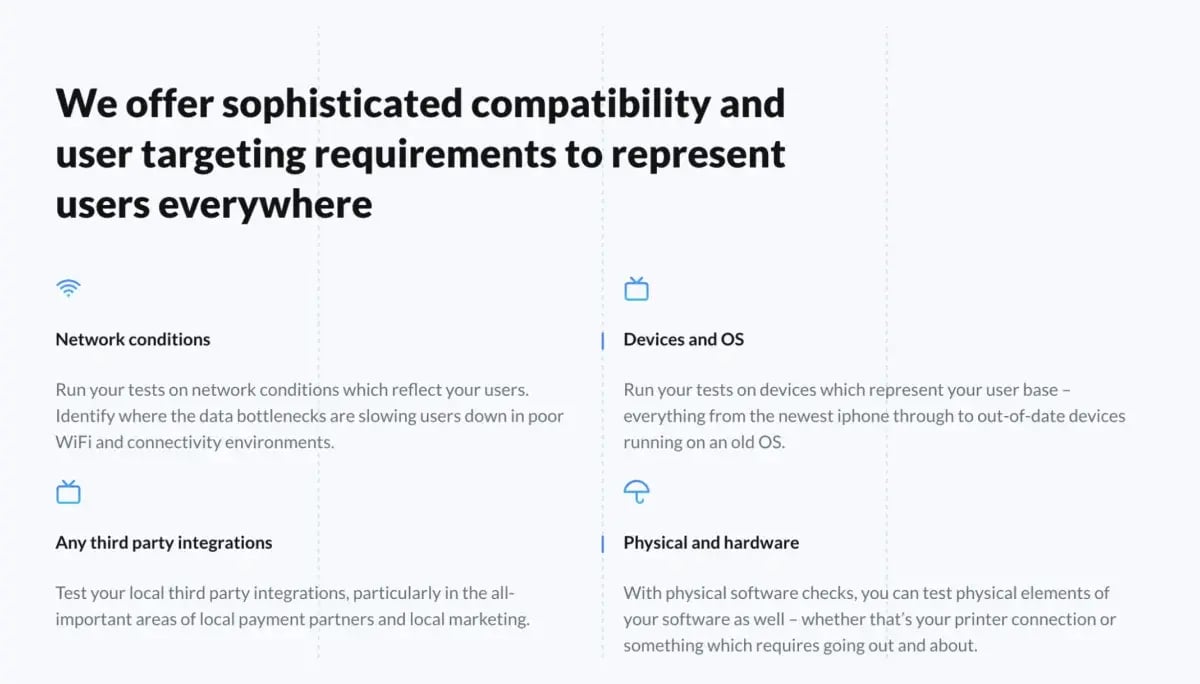
5. Maintain a clean and modular codebase
A clean and modular codebase is the foundation of a successful iOS application.
Modular design principles allow you to break our application into smaller, manageable components, simplifying testing and updates. This organized approach enhances collaboration among team members and facilitates future feature additions and updates.
6. Regularly update and review Test Cases
Testing is an ongoing process, so your test cases should evolve alongside your application. Regularly updating and reviewing test cases ensures that they remain relevant and effective.
As your app grows and changes, your test cases must align with new features and functionalities. Removing outdated or redundant tests helps you maintain an efficient and focused test suite, allowing you to catch new issues without being bogged down by unnecessary tests.
Pro tip
Launching test cases is effortless with our streamlined process, designed to integrate seamlessly into your existing workflows. Here's how we make it easy for you:
- Custom Test Case suites: We can handle the creation of your test case suites swiftly. Whether it's converting existing cases via GAT, writing new ones, or importing from spreadsheets, we've got you covered.
- Integration with workflow software: Launch your test cases directly from your preferred workflow software. We're compatible with popular tools like TestRail, Zephyr, and Azure. Alternatively, you can launch directly from our user-friendly interface.
- Suitable for any SDLC stage: No matter the stage of your software development life cycle (SDLC), we can handle your test cases efficiently, from design and development to release and live software phases.
- Comprehensive, actionable results: Expect thorough and actionable results from our testing services. We provide a full product overview, in-depth bug analysis, 100-day onboarding, and incentives for critical bug discoveries. Trust our professional crowd to deliver the insights you need.
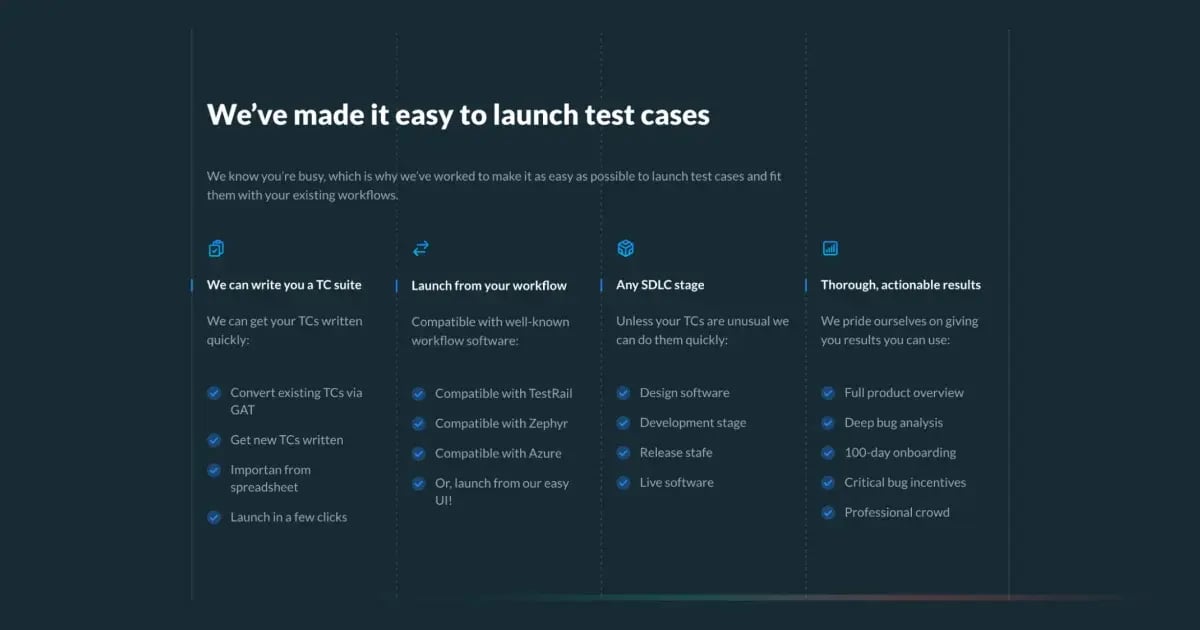
7. Ensure data security and privacy
Protecting user data is crucial during app development and testing. By using strong security measures and following regulations like GDPR and CCPA, you build trust with our audience and keep their information safe. This is especially important for iOS apps, given Apple's emphasis on user privacy.
Pro tip
Global App Testing has achieved ISO 27001 certification, meeting the highest worldwide security standards. Our robust processes and policies ensure data security, integrity, and availability.
- Our platform is exclusively hosted on Amazon Web Services (AWS), benefiting from high-security data centers. AWS complies with ACIPA SOC 2, ISO 27001, and ISO 27017 standards.
- All applications, databases, and storage are always encrypted using 356-bit AES encryption. Data is managed by AWS key management services.
- We use Auth0 for authentication, with employees utilizing single sign-on (SSO) technology through Google G Suite Directory, enforcing strong passwords and multi-factor authentication.
- We have disaster recovery and business continuity plans, high-quality infrastructure in Ireland, and backup in Stockholm. Our testers are available 24/7, and we regularly test our recovery plans.
- All traffic goes through Cloudflare with a Web Application Firewall enabled. We use TLS version 1.2 and secure SSL channels for all web traffic.
- We enforce secure development procedures, authenticate internal API endpoints, conduct regular external penetration tests, and operate a bug bounty program. Operational uptime and issues are reported on our status page.
- We protect unreleased builds, apps, and websites through secure platforms like TestFlight and Firebase. Testers sign NDAs, and access can be further secured via VPNs, IP, or email domain whitelisting.
Conclusion
iOS app testing is something you shouldn't overlook due to the platform's high user expectations for performance and reliability. At Global App Testing, we adopt a practical approach by integrating our test management platform with popular bug and issue trackers. This supports a hybrid testing strategy that balances automated and manual testing efforts, which is crucial for comprehensive and effective mobile app testing at scale.
Schedule a call with our specialist today and discover the impact of our extensive testing solutions!
We can help you drive iOS App Testing as a key initiative aligned to your business goals
Keep learning
What is test driven development? (+Examples)
iOS vs Android app testing - What's the difference?
What is Android testing - Types, tools and best practices

